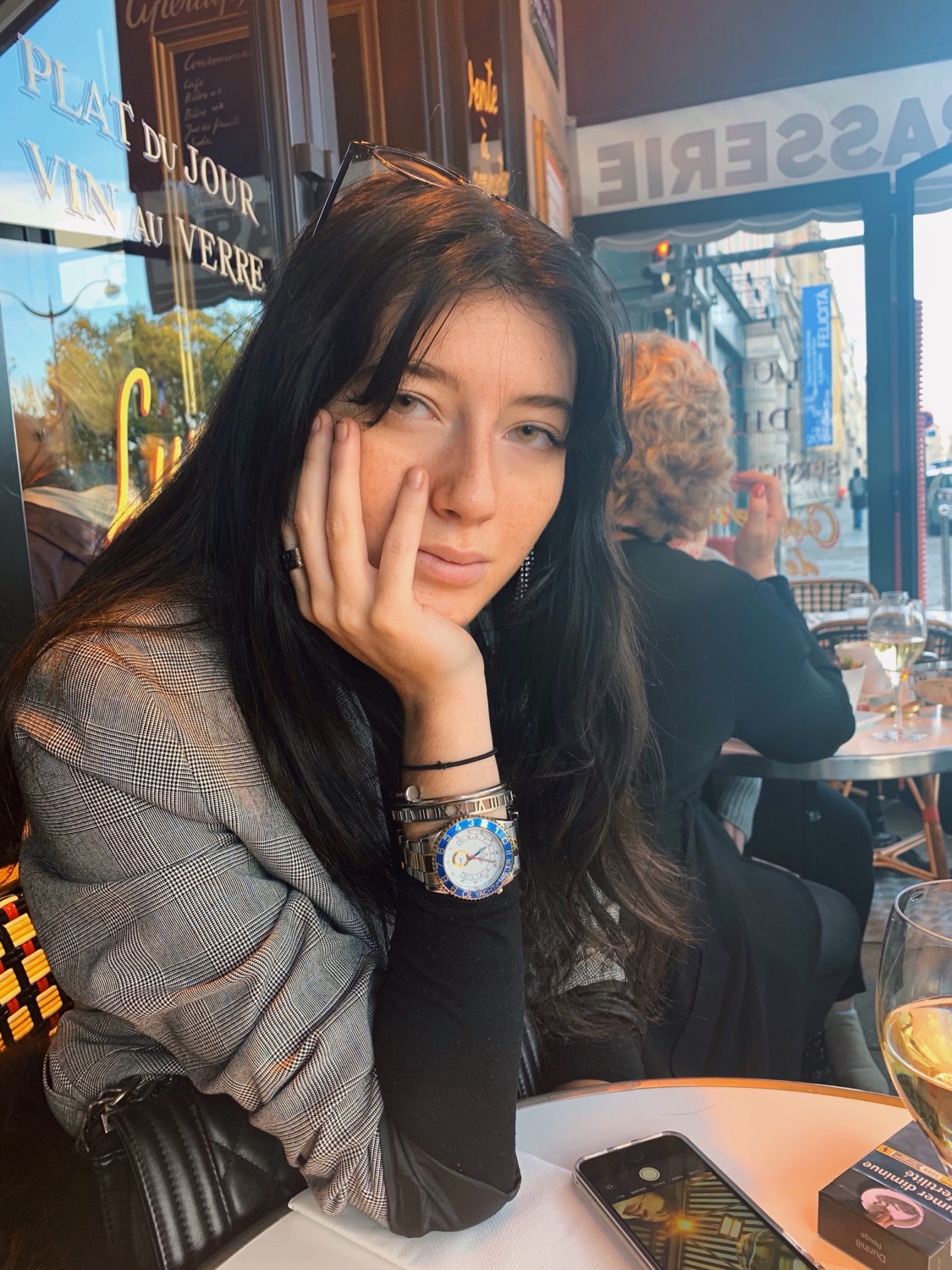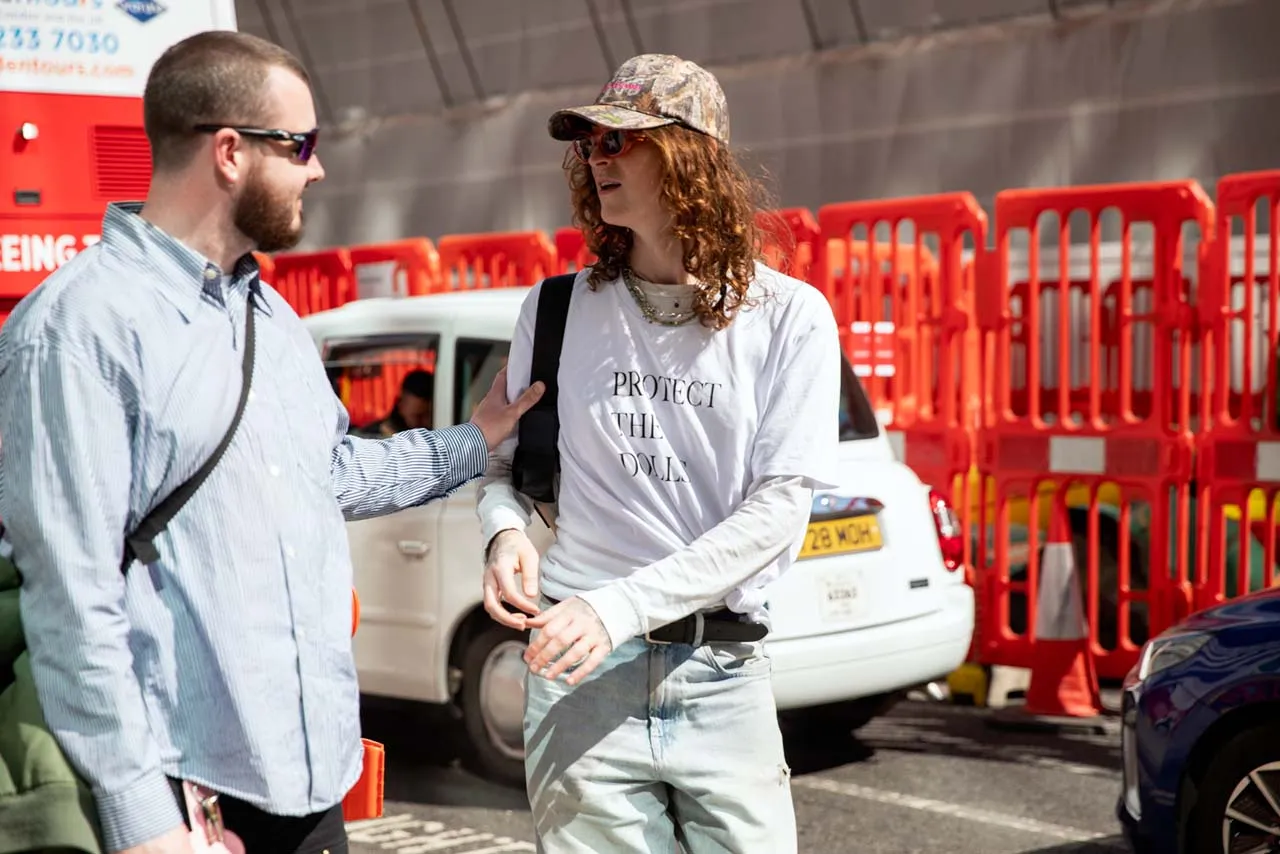"ALWAYS IN JOY": BEX WADE AND THE POLITICS OF PRESENCE AT SLQS GALLERY
- Victoria Comstock-Kershaw
- May 21
- 5 min read
"I never studied art. I never studied photography. But I studied performance, and that made all the difference."
So begins Bex Wade, the Bristol-based photographer whose new exhibition, I Know Who I Am By Being With You, now extended through 24 May at SLQS Gallery, turns the traditional model of photojournalism inside out. Their photographs, saturated with movement and intimacy, have traversed the walls of nightclubs, the pages of British Vogue, and now — perhaps most remarkably — the white cube.
From left to right: Bex Wade, Christeene, 2012, Bex Wade, She Just Always Is, 2010
Their work, which spans queer nightlife, protest, and portraiture, is rooted in what Wade calls an "obsession with presence." It’s a presence they earn, not assume. "When I was making the nightclub photos, I was dancing with people. Not observing from the side, not staging anything—I was moving with them. That’s how you sense energy. That’s how you frame a body."
That principle of shared energy underpins Wade’s approach to more politically charged images too. Their recent coverage of a trans rights protest for Vogue UK was "photographed in exactly the same way as the club work. The landscape changed. The what changed. But the how and the why? Exactly the same."
This consistency is not solely about aesthetics, however: it's also ethical. Wade's photographs resist the extractive tendencies of photojournalism, especially in protest contexts where visibility can become vulnerability. "I've literally got into verbal scraps with other photographers," they recall. "Especially cis, straight men who shoot protests like it's just a job. Who are you working for? Why are you making this image?" Instead, Wade insists on consent. Not as an afterthought, but as a guiding principle. "Every single person I photographed at that protest—I asked. Even if it was a group shot, even if someone was up a tree. I make sure. I look them in the eye. If I can't, I ask the person next to them to check. It's about saying: you matter."
Trans Rights Rally, London, April 2025. Bex Wade via Vogue UK
If Wade’s ethics are rigorous, their affect is expansive. Their work is driven not just by documentation, but by joy, by hope, by the irrepressible belief that being seen—truly seen—can be an act of resistance. "Joy isn’t a distraction from protest. It’s the point. Joy is how we survive. Joy is how we win."
In an age where platforms turn even pain into performance, Wade's photographs offer an alternative form of presence. They're not constructed for likes or algorithms. They're grounded in touch, sweat, and shared breath. "Social media made us hyper-aware of how we’re perceived," Wade says. "But perception isn’t the same as being seen. If you’re focused on how you’re perceived, you’re not actually being perceived."
Wade’s images of clubs, parties, and street gatherings crackle with humour and sensuality. They capture fleeting glances, half-smiles, outstretched arms in the smoke-machine haze. These aren’t posed portraits. They’re fragments of collective memory. "Some of these people I’ve never seen again. Some have passed. Some I now call family. What matters is that for that moment—we were alive." That aliveness, they explain, is what makes photography a hopeful act. "To take a photo is to say: this happened. We were here. We mattered."

Wade's sense of responsibility toward their subjects is matched by a refusal to separate their personal politics from their practice. "I’ve never been neutral. I’m a trans person photographing trans lives. I can’t be impartial. And I don’t want to be."
They speak often of intimacy, not just as a feeling, but as a technique. It stems, in part, from their background in performance. "I know how to create instant intimacy that’s real—not fake, not tactical. And people sense that. I’ve had conversations on the dancefloor that felt like years of knowing someone. That’s the photograph I want to take." For Wade, photography isn't only about capturing presence. It’s about marking absence too. "Some of the people in these images have passed. Some of the spaces no longer exist. There’s grief in the work, especially in queer photography, post-AIDS. It’s not just about who’s there. It’s about who’s missing."
That theme of presence and absence runs through the exhibition at SLQS Gallery, where images from as far back as 15 years ago now hang on institutional white walls. Wade admits the shift is "a little jarring. But also powerful." The work, they say, needed to "ferment"—to sit, steep, and gain the cultural gravity it now holds. "My work is like kimchi," they laugh. "It needed time."


Asked about their view on social media, Wade calls Instagram both "the best and worst thing to happen to photography." They’re grateful for the access it offers — especially to people who might never enter a gallery like the V&A, where Wade become the first trans artist to be permanently displayed only a few years ago — but wary of the ways it has commodified identity. Still, Wade is not anti-platform. They simply insist on intention. "Visibility isn’t enough. We’ve been visible before, and it hasn’t saved us. What matters is how we are seen, who is doing the seeing, and whether we’re given the power to see ourselves." This is why Wade emphasises the importance of mutual recognition. It’s not enough to be observed; there must be reciprocity. "That’s why I always look people in the eye when I photograph them. It’s not about taking their image. It’s about exchanging something real."
Wade remembers photographing Pride in Belgrade—"hidden behind riot police, barely visible to the city." They were initially frustrated by the lack of visibility. "What’s the point if no one sees us?" But then something shifted. "I realised: the point is us seeing each other. The point is the feeling. We don’t need to be perceived to be real. We already are."
That reframing of visibility away from mass exposure and towards internal witnessing runs throughout Wade’s practice. They describes their favourite protest image not as the loudest or most dramatic, but as a moment of quiet connection—“two people whispering to each other, holding hands.” That, they suggest, is the revolution. In that sense, their photographs aren’t just records of queer existence: they’re love letters to it. Each image holds the tension between the ephemeral and the eternal: a dancefloor becoming a sanctuary, a protest sign becoming a monument, a passing face becoming unforgettable.



From top to bottom: Bex Wade, Hey Queen, 2013, This Bloody Bow, 2010 Installation photography courtesy of SLQS/Studio Adamson
"My images might hang in galleries now," they say, "but they weren’t made for that. They were made in sweat. In smoke. In strobe lights. In chants. In tears. And always, always, in joy."
With care, honesty, and deep accountability, Wade’s lens doesn’t just record—it witnesses. And in doing so, it makes a claim: that visibility without responsibility is violence, and that the radical gesture is not exposure, but consent. That to look with love — and to be looked at with love — is perhaps the most enduring act of protest we have. In the end, Wade says, photography isn’t just about showing something. It’s about reminding us to feel it. "If someone looks at my work and remembers what it means to hold someone close, to fight for them, to laugh with them—that’s the whole point. That’s it. That’s the hope."
I Know Who I Am By Being With You anchors SLQS Gallery’s summer programme, which continues with Only Your Name, a group show featuring works by Hoa-Dung Clerget, Vicky Đỗ and Duong Thuy Nguyen, opening during London Gallery Weekend (6 June – 12 July 2025, 20 Club Row, London, E2 7EY).
Victoria Comstock-Kershaw is a London-based critic and arts editor.















